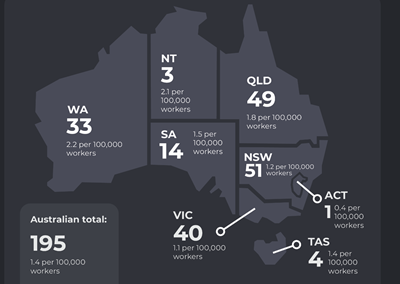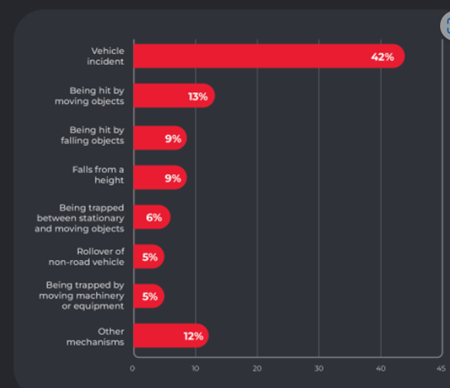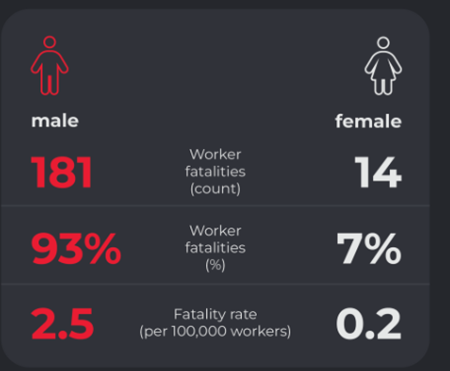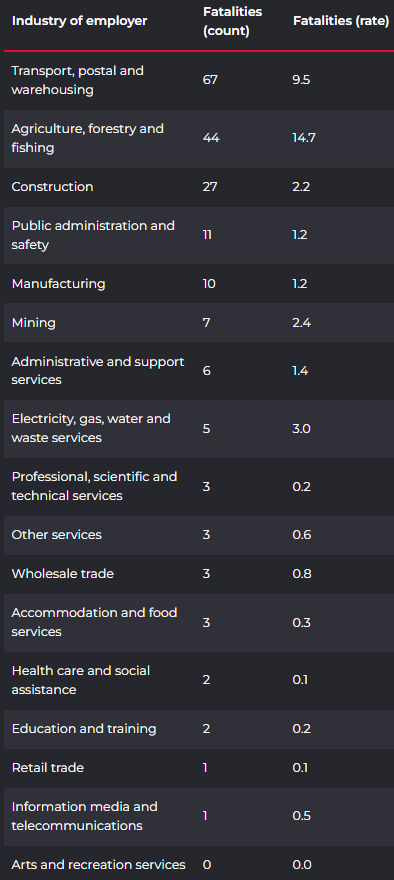In brief - Safe Work Australia has recently released their interactive Safe Work Method Statement (SWMS) Guidance Tool. This tool is designed to assist high-risk construction PCBU's to discharge their obligations under the model Work Health and Safety Act 2011 and Victoria's Occupational Health and Safety Act 2004.
Background
Safe Work Australia's (SWA) recently launched interactive Safe Work Method Statement (SWMS) Guidance Tool is designed to support individuals and businesses engaged in high-risk construction work, helping them discharge their obligations under the model Work Health and Safety Act 2011 and Victoria's Occupational Health and Safety Act 2004.
What is high risk construction work?
High-risk construction work is defined by the Regulations and encompasses activities which have the potential to cause serious injury or death, including work:
-
Involving a risk of a person falling more than 2 metres.
-
Carried out on a telecommunication tower.
-
That involves demolishing a load-bearing element of a structure or one related to its physical integrity.
-
That involves disturbing asbestos.
-
Requiring temporary support to prevent collapse due to structural alteration or repair.
-
Carried out in or near a confined space.
-
Near or in a shaft or trench deeper than 1.5 metres or a tunnel.
-
Involving the use of explosives.
-
Or near pressurised gas mains, piping, chemical, fuel, or refrigerant lines.
-
On or near energised electrical installations or services.
-
In an area that may have a contaminated or flammable atmosphere.
-
Involving tilt-up or precast concrete.
-
On, in, or adjacent to a road, railway, shipping lane, or other traffic corridor in use by traffic other than pedestrians.
-
In an area of a workplace with movement of powered mobile plant.
-
In areas with artificial extremes of temperature.
-
In or near water or other liquid involving a risk of drowning.
-
Involving diving.
Who is responsible for preparing the SWMS?
Those responsible for undertaking the high-risk construction work are expected to prepare SWMS. Each SWMS should be prepared in collaboration with the person(s) conducting the work through direct involvement of relevant workers. The Principal contractor, project managers, and subcontractors should work together to determine which workers should be involved in the preparation of SWMS.
SWMS Guidance Tool
SWA's latest SWMS interactive guide provides a comprehensive overview of the purpose, necessity, and application of SWMS. The tool is practical and is designed to enhance user understanding through three modules:
-
understanding a SWMS
-
preparing a SWMS
-
using a SWMS
This step-by-step guide incorporates videos, interactive content, and clear, straightforward messages. Its primary goal is to shift the culture around SWMS, ensuring that Persons Conducting a Business or Undertaking (PCBUs) genuinely consider hazards and risks and take steps to eliminate or minimise risks to health and safety, so far as is reasonably practicable.
The interactive SWMS Guidance Tool can be accessed here.
You should also check in with local regulators to confirm additional safety requirements, including Code of Practices applicable to your state, industry for the work being performed.
Why is this important?
Tragically, in 2022, 195 people were fatally injured at work in Australia. While there has been a 30% decrease in workplace fatalities since 2012, it is clear that more work is needed to ensure safety in the workplace.

* Safe Work Australia, Key Work Health and Safety Statistics Australia, 2023 <https://data.safeworkaustralia.gov.au/insights/key-whs-stats-2023>
The most common contributors to death in 2022 included:

* Safe Work Australia, Key Work Health and Safety Statistics Australia, 2023 <https://data.safeworkaustralia.gov.au/insights/key-whs-stats-2023>
Machinery operators and labourers were at the highest risk of work related fatality in 2022.

*Safe Work Australia, Key Work Health and Safety Statistics Australia, 2023 <https://data.safeworkaustralia.gov.au/insights/key-whs-stats-2023>
Men are at higher risk of work related fatalities or serious injury than women. Men represented 93% of fatalities in 2022.

* Safe Work Australia, Key Work Health and Safety Statistics Australia, 2023 <https://data.safeworkaustralia.gov.au/insights/key-whs-stats-2023>
While fatality rates in construction have improved significantly since 2012, the fact remains that 14.7% of deaths in 2022 occurred in this sector. The SWMS Guidance Tool has been created to assist this sector to better protect workers from the risk of injury or death.

* Safe Work Australia, Key Work Health and Safety Statistics Australia, 2023 <https://data.safeworkaustralia.gov.au/insights/key-whs-stats-2023>
Where the human cost is high, so too is the economic cost of serious physical and mental injury. In 2022 the median compensation for work related serious mental health claims was $58,651 with 1:11 workers claiming compensation for serious mental health conditions. The SWMS Guidance Tool is intended to help PCBU's and workers better assess and manage physical and mental health risks through a collaborative approach to the SWMS process.
Should you have any questions about the SWMS Guidance Tool or how you might improve safety standards at your workplace, please let us know.
This is commentary published by Colin Biggers & Paisley for general information purposes only. This should not be relied on as specific advice. You should seek your own legal and other advice for any question, or for any specific situation or proposal, before making any final decision. The content also is subject to change. A person listed may not be admitted as a lawyer in all States and Territories. © Colin Biggers & Paisley, Australia 2024.